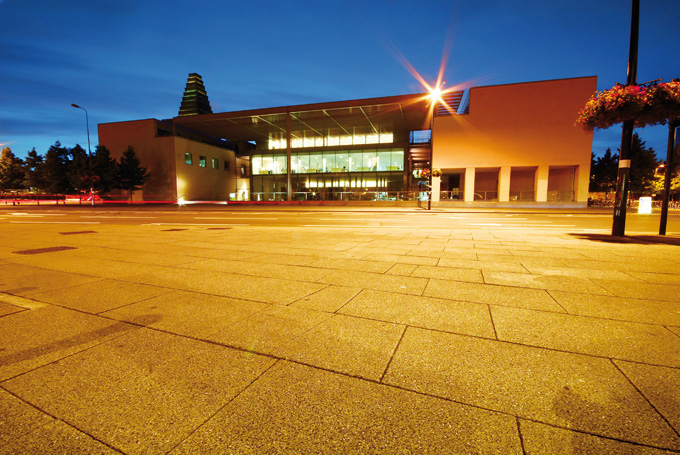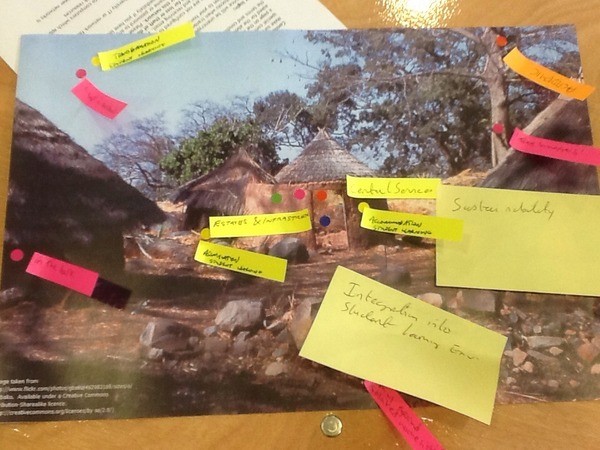I should say upfront that these are live blogs – as such there may be the odd typo!
I’m involved as a consultant in this HEFCE funded programme organised by LFHE and with other partners including my employer Jisc. It has a twitter tag #CLL1213
Today I’m at the Oxford Said Business School meeting other consultants and associtions to share tips and tricks as well as determine the way forward for any future activities.

Or as the agenda describes it:
• To enable colleagues working on different strands of CLL to meet one another and
share perspectives
• To identify potential ways of continuing to work together to support the sector in
2013 – 2014
• To incorporate new policy and technological developments as they emerge during the course of a dynamic set of programme activities
We started off with a nice ice breaker by Professor Stephen Gomez, Academic Lead – Online Learning, Higher Education Academy and Jessica Poettcker, Quality and Student Engagement Consultant (Technology Enhanced Learning), National Union of Students
Here groups were invited to label a Flikr image with CLL ‘beneficiaries’, in terms of where they are and where we’d like to see them move to. All good fun and something I may use myself.
Here’s an example

Here’s a very quick explanation of where we placed people in the village
Integration into the student environment
Central services reaching into the huts as different sections within the univertsity
The estate and its role
Learning styles and how accommodation can be utilised
Employers and alumni being on the ground
The academics (on the tree of knowledge)
Support roles who might be in the hut, at the heart of things and highly visible, or on stony ground and having little impact or in the dark yet doing good things
Next up are my colleagues Tish Roberts and Lawrie Phipps who will explore with the group
‘Potential for Year 2: what we may achieve together’
Tish hopes to identify what the achievements have been as group work and Lawrie has opened a ‘Padlet‘ which we used to capture some of these as PDF
Next up Lawrie challenges us – ‘if we were to do this again, which three things we did really well together should we do in the future?’ as individual consultants and as organisations. Here are those my table identified.
1. Defining a convincing vision for a technology enhanced future for educational experiences as each organisation comes at the area from different directions.
2. Synthesis from the case studies and stories from year 1 to help others attain the benefits themselves. Engagement from senior leaders and how to engage the relevant stakeholders in transformative change. So realising the benefits more widely.
3. A suite of vehicles to help people achieve similar change such as webinars, practitioner events etc etc
Captured as a PDF
Next up it’s Maren Deepwell, Chief Executive, Association of Learning Technology Incorporating change into a fast-moving programme
Maren started off with this slide of key questions

The group highlighted the following additional key issues
1. learning analytics as a further opportunity (and new readers of this blog will find lots on that topic here including a write up of last weeks Learning Analytics and Knowledge Conference (Mark va Harmelen)
2. re-engineering the lecture and new pedagogical approaches underpinned by technologies (and not) (Patsy Cullen)
3. New types of learners (rather than technologies, look to the learners themselves and their needs) (Paul Bailey)
Next up Maren sets up some group work ‘how we can be responsive as a programme’

Here were the thoughts my group came up with;
1. Preparation to bid and building capacity to engage
2. Incubation of ideas and pre-incubation for the non-involved (includes refining what is desirable to achieve and why in the context of each institution)
3. Streaming into strands or identifying other interventions (could be introductions and shared work areas outside of the CLL)
4. Address the cyclical nature of CLL in terms of outputs becoming available and new markets for them (includes individual and organisational capability)
5. The notion of ‘CLL Alumni’ acting in some capacity as ‘Mentors’ to new projects
The final activity from Maren is to learn from what works and link into what’s happening

So the group is to identify ideas of approaches that are working and any key events / networks / individuals that CLL might develop links with.
We highlighted the following:
1. Tapping into National Teaching Fellows as they are experts, keen and under utilised
2. Librarian and information specialists in particular for their teaching potential in information and digital literacies
3. Sheila Mc Neil and the Learning Analytics Series
4. The flipped classroom
5. Design for Learning / techniques for curriculum design and delivery
Maren wil collate these and if she blogs I’ll add the link.
All in all a busy and informative day with some nice group work. Nice to meet fellow CLL Consultants and also the LFHE team behind the programme.
Thanks Myles, this is very helpful. Just a quick note: in our mud hut village picture from the ice-breaker, ‘accommodation’ meant accommodative learning (alongside assimilative and transformative learning), ie building new conceptual huts! 🙂
Thanks for this, Myles. It’s an excellent summary of the activities and it’s great to have it all explained here for those who couldn’t attend. The landscape activity went really well and we have a number of different landscapes (industrial, seascapes, rural etc) which have been marked up. Let me know if you’d like to include images of these too for your blog.